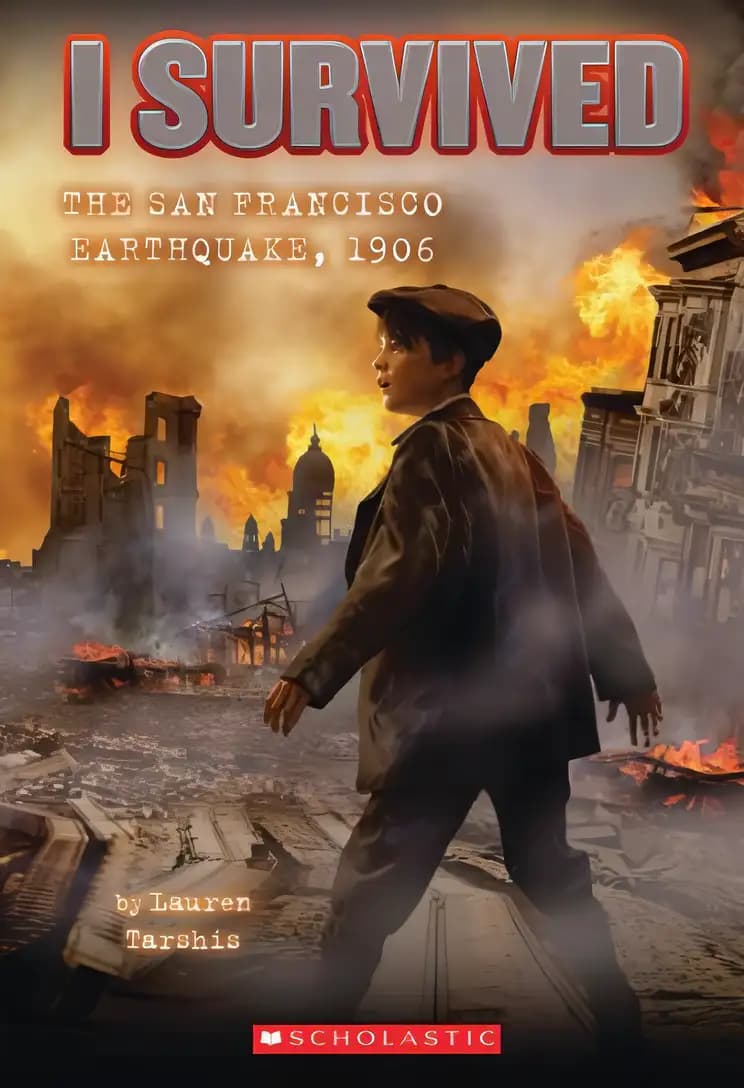I Survived the San Francisco Earthquake
What’s inside...
The story takes place during the 1906 San Francisco Earthquake. Eleven-year-old Leo loves being a newsboy in San Francisco. His world is rattled when he wakes up to an earthquake, but nothing prepares him for the epic fire that follows. Leo and his friends must find a way to survive amidst the chaos of a destroyed city.
Why read this book
- Engages young readers with thrilling historical events.
- Strengthens resilience through character perseverance and courage.
- Enhances knowledge of American history in an accessible way.
- Supports development of empathy and emotional insight.
Age
8-10
Length
112 pages
Text complexity
Character compass
Leo
Wilkie
Morris
Fletch
Discussion points
How do you think Leo felt during the earthquake? Can you describe what emotions he might have experienced?
What are some ways that Leo showed bravery and resilience throughout his challenges?
If you were in Leo's situation, how would you have reacted? What would you have done differently?
Why do you think it's important to help others during a crisis like an earthquake?
What did you learn about the history and impact of the San Francisco Earthquake from this story?
Tip: Role play these questions
Start by sharing your own thoughts on the book to create an open atmosphere for your child to express their feelings and opinions.
Relate the story's events to personal experiences or current events to make the discussion more relevant and meaningful.
Encourage your child to think critically by asking them to consider different characters' perspectives and the decisions they made.
Praise your child's responses and insights to boost their confidence and encourage deeper thinking.
Use the story as a starting point to teach your child about empathy and the importance of community support during challenging times.
Key lessons
Example Lesson: Resilience in the face of adversity
Explanation: The protagonist of 'I Survived the San Francisco Earthquake' demonstrates remarkable resilience by navigating the challenges posed by the earthquake, showcasing adaptability and courage.
Real-World Application: Children can learn to remain strong and adapt during unexpected challenges or changes in their own lives, understanding that they can overcome difficulties with determination.
Example Lesson: Historical awareness and learning from the past
Explanation: The story is set during the 1906 San Francisco Earthquake, providing historical context that helps children learn about significant events that shaped the world.
Real-World Application: This knowledge can spark children's interest in history and encourage them to learn more about other historical events and their impacts on society today.
Example Lesson: The importance of helping others
Explanation: In the aftermath of the earthquake, characters in the book come together to help each other, demonstrating the value of community support and cooperation.
Real-World Application: Children can apply this lesson by practicing kindness and support in their daily interactions with peers and community members, fostering a helpful and cooperative environment.
Example Lesson: Courage to face fears
Explanation: The main character faces numerous fears as the events of the earthquake unfold, showing bravery in dire situations.
Real-World Application: This encourages children to face their own fears and understand that being brave does not mean not feeling afraid, but rather facing and overcoming those fears despite the challenges.
Example Lesson: Learning from mistakes
Explanation: Characters in the book make various decisions, some of which lead to mistakes from which they learn and grow, underscoring the importance of learning from errors.
Real-World Application: It teaches children that making mistakes is a part of learning and growth, and that each mistake is an opportunity to learn and improve oneself.
